Dados do Trabalho
Título
NUTRITIONAL INTERVENTION PREVENTS A DETERIORATION OF BODY COMPOSITION IN PATIENTS ON ANDROGEN DEPRIVATION THERAPY(ADT)
Resumo
Background:
The use of androgen deprivation therapy (ADT) for treating prostate cancer results in several changes in body composition, including increase of fat, decrease of lean mass and loss of strength. Consequently, patients worsen cardiovascular risk and become more dependent for activities of daily living.
The aim of the study is to evaluate early nutritional intervention as a preventive measure in the loss of lean mass, maintenance of strength levels and reduction in the percentage of body fat.
Methods:
We prospectively evaluated 47 patients with prostate cancer on ADT at 3- month intervals to assess the effectiveness of nutritional intervention to prevent a deterioration in body composition such as increased fat percentage, decreased lean body mass, and reduced strength levels.
To assess body composition, a bioelectrical impedance (InBody Lookin’Body120) was performed to measure weight, lean body mass (LBM) and body fat (BF).To assess muscle strength, a handgrip (JAMAR) was used, with a reference of less than 27 kg as low performance. The test was repeated 3 times and the best result was maintained.
We performed the Mann-Whitney test to compare body fat with or without the intervention and the Shapiro-Wilk test to compare the effects on muscle mass.
Intervention:
Patients were instructed to follow a normocaloric (between 20-25 kcal / kg) or hypocaloric (18-20 kcal / kg) diet, depending on whether they were of adequate weight or overweight, respectively. All were recommended to use a hyperproteic diet (1-1.2 g/kg) with whey protein supplementation.
Results:
All patients in the study were over 65 years of age. Overall adherence to protein supplementation and prescribed diet was 83%. Non-adherence to the prescribed diet was 8.5% and 6.4% of patients did not use protein supplementation. Only one patient received a normoproteic diet due to chronic kidney disease.
In the assessment of body weight, we observed an average loss of 0.8 kg, although this was not the objective of the established strategy. Lean body mass increased by 0.6 kg, and total body fat had a median reduction of 5.0kg. There was no decrease in strength during the intervention.Nutritional intervention maintained muscle mass (p = 0.421) and reduced body fat (p < 0.001).
Conclusions:
Our results show that nutritional intervention is feasible (87% patient compliance) and highly effective with a statistically significant reduction in body fat, with maintenance of lean mass and strength.
Palavras Chave
sarcopenia; ADT effects, nutritional intervention
Área
Complicações do tratamento oncológico
Instituições
LACOG-GU - São Paulo - Brasil, ONCOCLINICAS - Distrito Federal - Brasil
Autores
PAULO SERGIO MORAES LAGES, MICHELLE SILVA BARBOSA, DANIEL VARGAS PIVATO ALMEIDA, GIANCARLO CASTRO DOURADO PINEZI, MARIA FERNANDA MESSIAS PINHEIRO, ANDREY SOARES, LUCIANA CASTRO DOURADO LAGES, CRISTIANO AUGUSTO ANDRADE DE RESENDE, DIOGO ROSA, CAMILA ROSA DUTRA


 Português
Português English
English